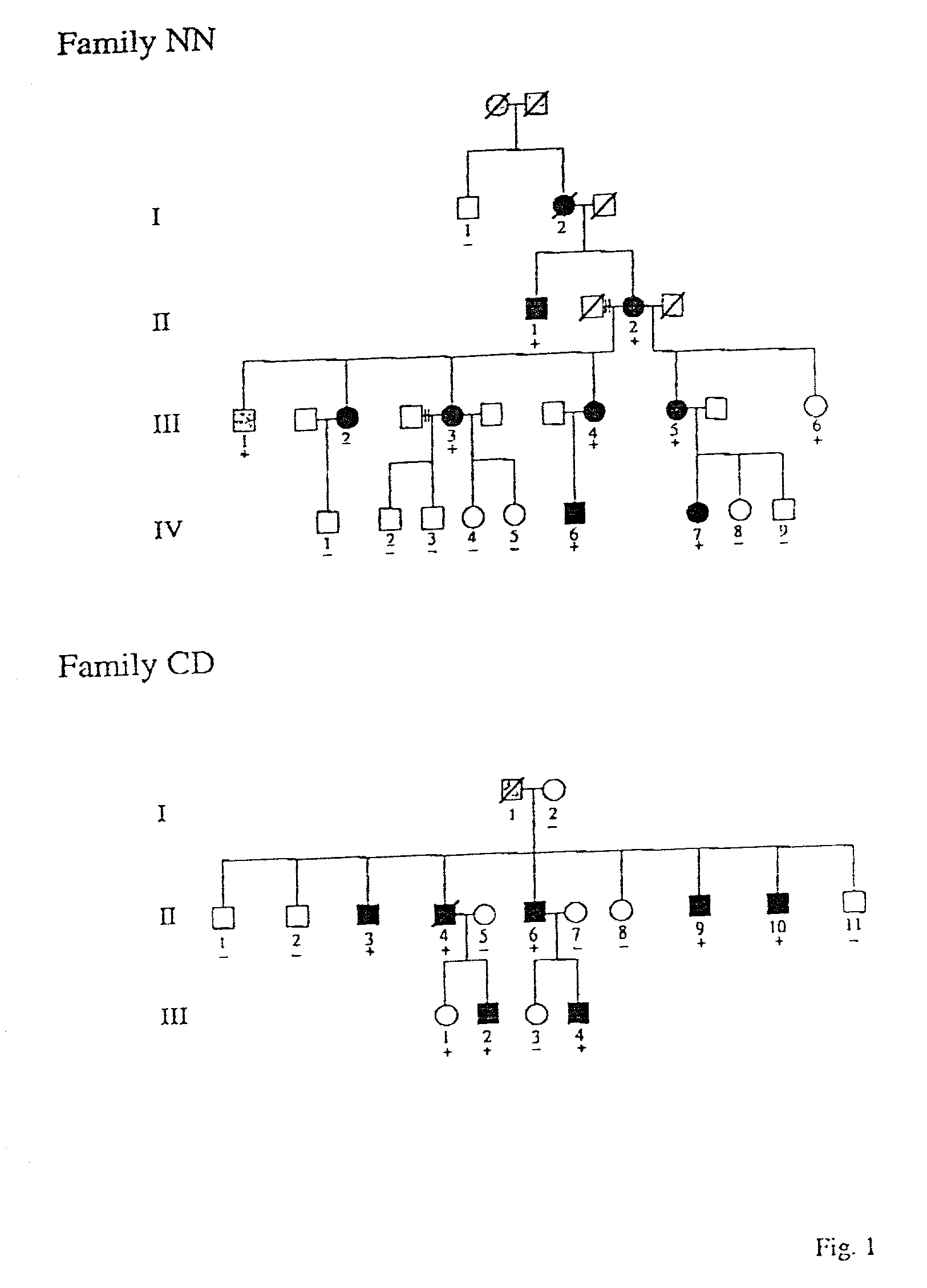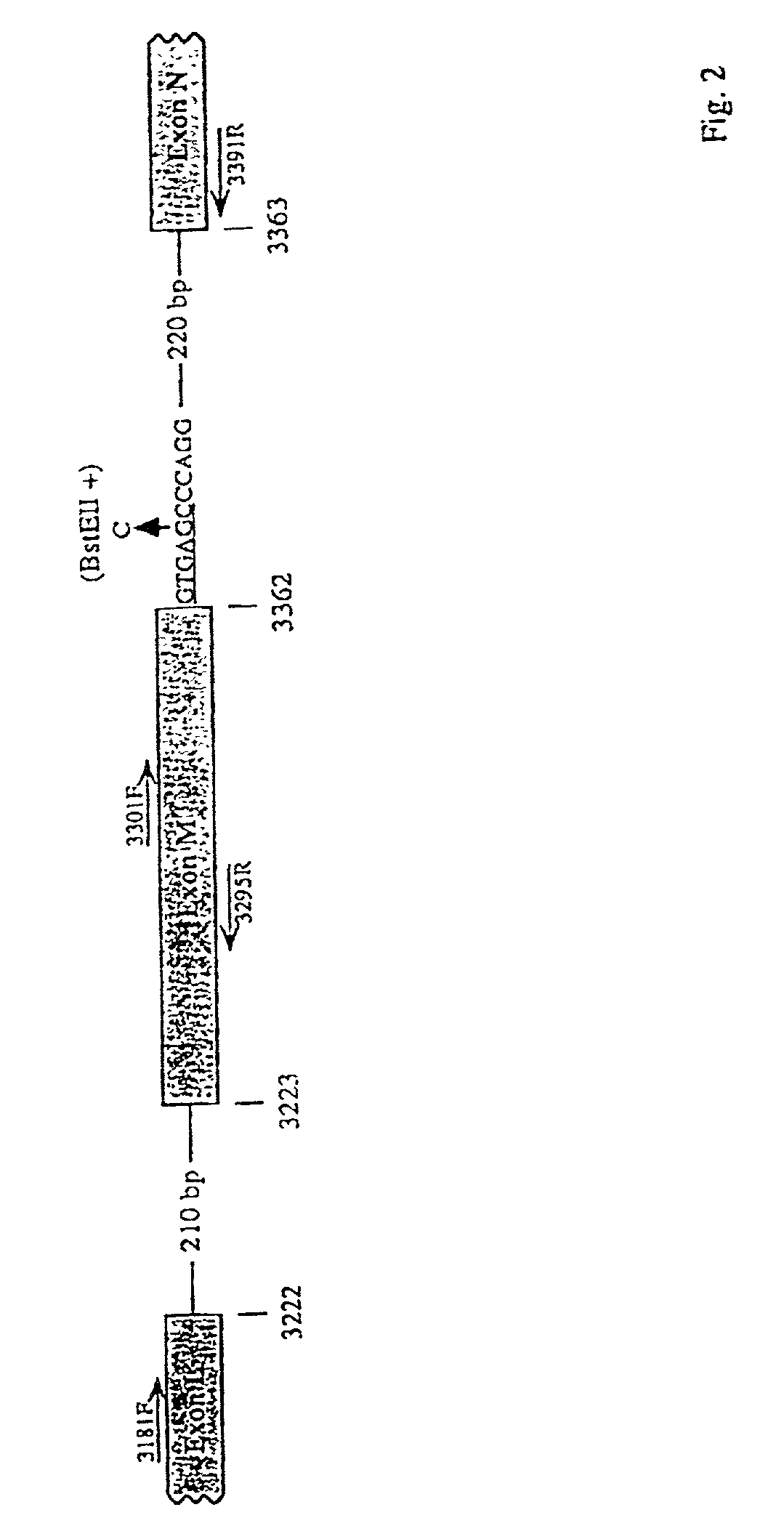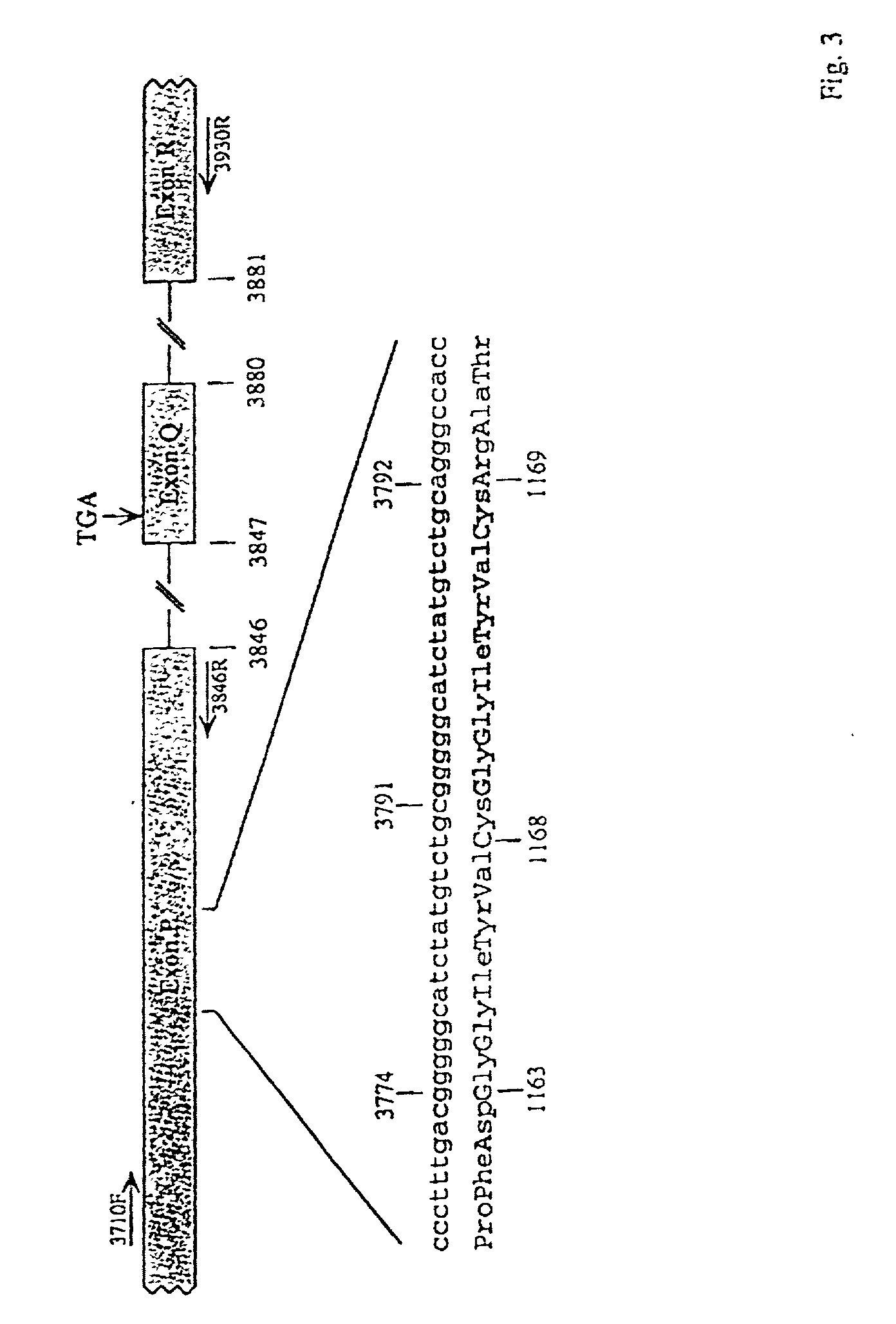Methods for detecting mutations associated with hypertrophic cardiomyopathy
a cardiomyopathy and mutation technology, applied in the field of methods for detecting mutations associated with hypertrophic cardiomyopathy, can solve the problems of increased myocardial demand, inappropriate coronary flow reduction, and physiological consequences of both systolic and diastolic dysfunction
- Summary
- Abstract
- Description
- Claims
- Application Information
AI Technical Summary
Benefits of technology
Problems solved by technology
Method used
Image
Examples
example 1
Identification of Mutations in the Cardiac Myosin Binding Protein-C Gene
[0069] All members of two families with FHC (designated NN and CD. FIG. 1) were evaluated by physical examination, electrocardiogram, and 2-dimensional echocardiogram. In Family NN disease symptoms included exertional dyspnea and chest pain. One individual (IV-7) experienced syncope and another (Individual II-2) had a cerebral thromboembolism. There was no family history of sudden death. Seven individuals fulfilled standard diagnostic criteria for FHC (Watkins, H. et.al. (1995) N. Engl. J. Med. 332: 1058-1064). Individual III-5(age 50) lacked echocardiographic findings of cardiac hypertrophy but was also considered affected based on symptoms and nonspecific electrocardiographic abnormalities; in addition, she transmitted FHC to her daughter (Individual IV-7). Individual III-1 (age 35) had only non-specific electrocardiographic abnormalities and was considered to be of unknown disease status. Clinical studies in ...
PUM
| Property | Measurement | Unit |
|---|---|---|
| volume | aaaaa | aaaaa |
| diameter | aaaaa | aaaaa |
| stiffness | aaaaa | aaaaa |
Abstract
Description
Claims
Application Information
 Login to View More
Login to View More - R&D
- Intellectual Property
- Life Sciences
- Materials
- Tech Scout
- Unparalleled Data Quality
- Higher Quality Content
- 60% Fewer Hallucinations
Browse by: Latest US Patents, China's latest patents, Technical Efficacy Thesaurus, Application Domain, Technology Topic, Popular Technical Reports.
© 2025 PatSnap. All rights reserved.Legal|Privacy policy|Modern Slavery Act Transparency Statement|Sitemap|About US| Contact US: help@patsnap.com



